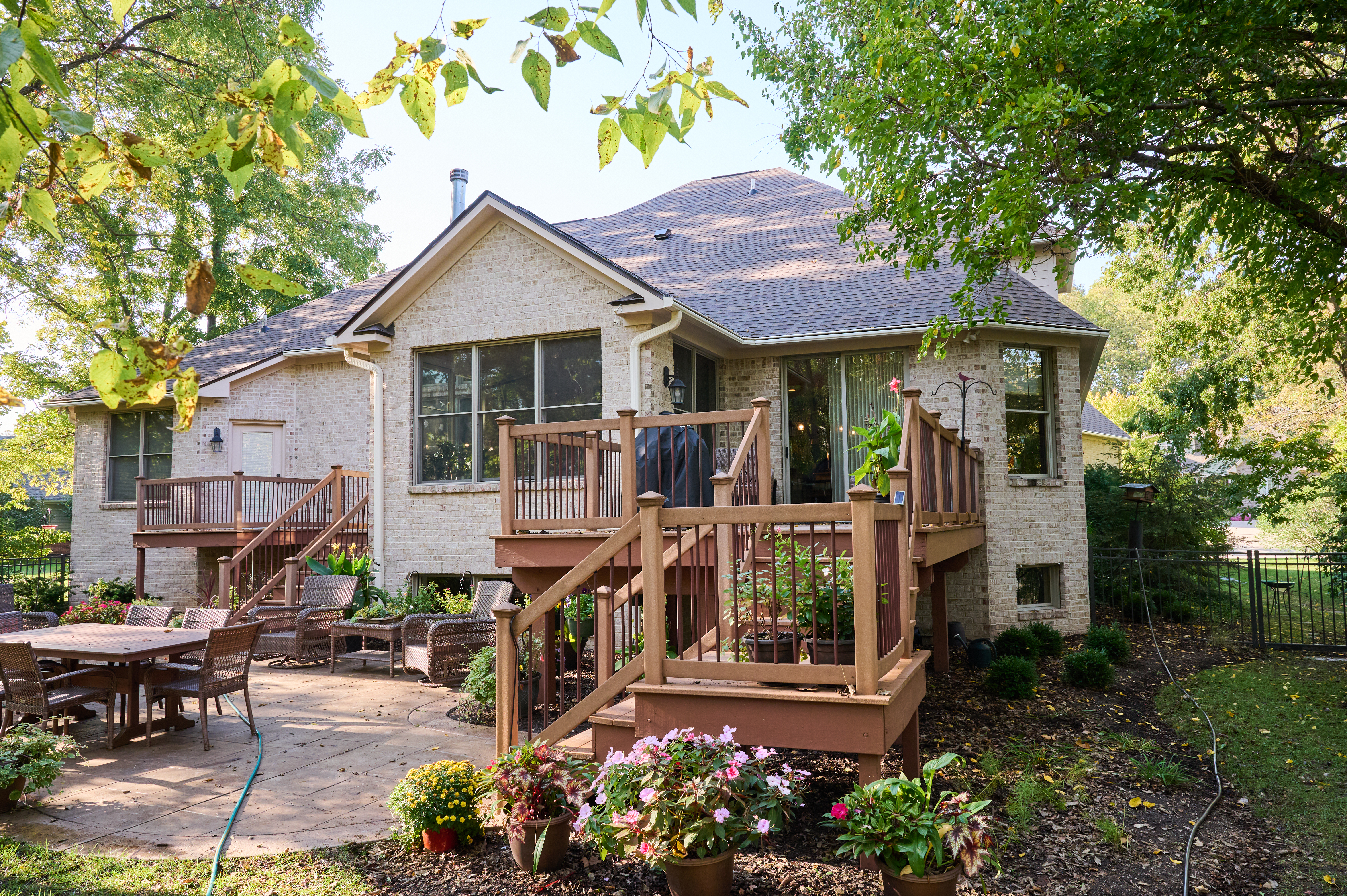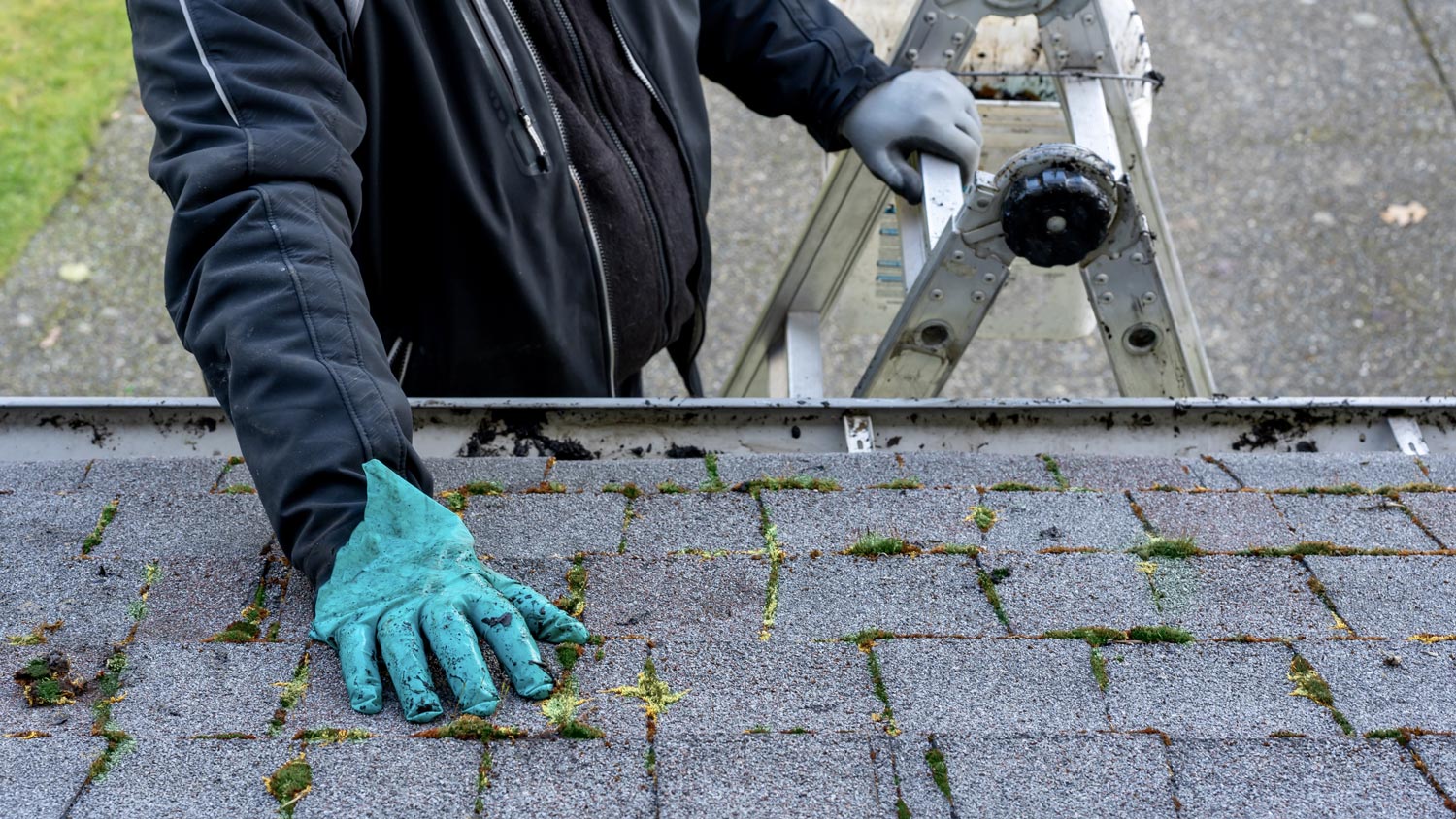
Find out average roof shingle repair costs, factors affecting pricing, such as material and labor, and how to save on your next roof repair project.
Here's how to help your roof live a long and prosperous life


Performing routine cleaning and maintenance on your roof will not only keep it looking its best, but also increase its lifespan. Considering that the average cost of a new roof can vary from $5,000 to $45,000, it is in your best interest to prolong the amount of time between full roof replacements. The good news is that keeping your roof like new is as easy as staying on top of small maintenance and cleaning jobs. Check out these nine tasks that can extend the life of your roof.
Much like your siding and windows, your roof needs a good cleaning every now and then. Clearing your roof of debris like leaves and sticks will help prevent algae and mildew from growing.
You can hire a professional roof cleaning service to do this job, or you can tackle it yourself (remember to use safe ladder practices). You can buy an enzyme cleaner at a local hardware store, attach it to your hose, and then spray the solution onto your roof. Most of these cleaners will sit for a day or so (or until the next rain), and then rinse off on their own over time, making them a quick and easy cleaning option.
If you notice missing or damaged shingles on your roof, it is time to contact a local roof repair company to come fix it. Damaged or missing shingles can allow water to leak through to the decking or attic interior, leading to mold and mildew issues, as well as compromising the structural integrity of the roof. Hiring a local roof repair company to repair or replace shingles is a key factor in extending the life of an asphalt shingle roof. If shingle damage was caused by a storm, you may be able to get insurance to pay for a new roof.
If your home does not already have gutters, installing them to help keep water moving down the slope of your roof and away from your house can keep your roof looking stellar. Not only do gutters help to control moisture (which prevents algae and mildew from building up), but they also keep water from going under shingles and into the eaves.
While they may sound like something beavers build over winter, ice dams are ice deposits that form in your gutter and block water flow—and they can cause damage to the roof and soffit and fascia materials. Ice dams happen when a ridge of ice develops at the lower edge of your roof slope, preventing melting snow higher up on the roof from sliding down into the gutters, where it is supposed to go. Instead, the water backs up, eventually leaking into your home. Install and clear gutters before winter begins. Also, winterize your home to prevent your roof from leaking heat, which leads to melting snow.
Those leaves that look so pretty at the start of fall can wreak havoc on your roof (and your back) when it is time to collect them. Trim back any tree branches that hang over your roof to avoid the collection of fallen leaves and wind-blown branches. Since trimming trees often requires a chainsaw and a ladder, you may prefer to hire a pro. You can expect to pay a tree trimmer between $200 and $760 for the service, but the cost may be worth it to extend the roof’s life.
When heat rises in a home, it can heat up the roof if it is not properly insulated. This melts the snow and ice on the roof, which then refreezes when it gets to the edge of the roof, causing ice dams. Insulating your attic and ceilings will keep warm air trapped in the home, which is good for winter heating bills, and it can help avoid future roofing issues.
A special roof treatment can extend its life. Apply a sealant or protective coating after installing your roof to improve its longevity. Roof coating and sealing costs between $0.65 and $5 per square foot, but it can make a huge difference. Only certain types of roofs need sealants to look their best, like stone, metal, and slate. A certified roofing professional can reapply it every few years.

Climbing a ladder and getting up on a roof can be dangerous, especially for homeowners who are not used to dealing with roof issues. If you want to know how to extend the life of your roof, a professional roof inspector can check on its state and offer suggestions for work that needs to be done.
Looking at your roof, you will see some pipes poking out or some raised vents. These ventilation systems are an important factor in extending a roof’s life. Roof vents allow warm air to escape from the attic and keep the air circulating throughout the space. This helps to mitigate moisture issues and prevent ice dams, both of which are bad for a roof.
Taking care of routine maintenance and making sure the attic is insulated and vented properly can help extend a roof’s lifespan. Other actions, like cleaning and applying roof sealing treatments, are a good investment that help to get as much time as possible out of your roof. Choosing a durable material is smart, as well. For example, slate, concrete, or metal roof costs may be higher than asphalt shingles, but you will get more life out of them.
The lifespan of a roof varies depending on the roofing material, maintenance, and environment. Some roofing materials can last over 100 years while others are only good for 20 to 30 years. In mild climates, roofing materials tend to last longer than in climates that see heavy snow, lots of rain, high winds, or beating sun. Here are average lifespans for common materials:
Asphalt shingles: 20 to 30 years
Metal: 40 to 80 years
Wood shakes and shingles: 25 to 30 years (up to 50 if properly maintained)
Concrete tiles: 50 to 100 years
Clay tiles: 50 to 100 years
Slate: 60 to 150 years
Copper: 70 years
Zinc: 100 years
The best way to keep your roof in great shape is to keep an eye on it. Familiarizing yourself with how your roof usually looks will help you to spot problems quickly so you can fix them immediately. You can call a local roof inspector with your concerns before they become serious problems.
From average costs to expert advice, get all the answers you need to get your job done.

Find out average roof shingle repair costs, factors affecting pricing, such as material and labor, and how to save on your next roof repair project.

The cost of replacing a flat roof is much lower than an angled one. Learn about the factors that can affect flat roof replacement costs and ways to save on a quality replacement.

Asphalt shingle roofs are the most common roof type in the U.S. Learn about average shingle roof costs and the factors that can affect your total.

Discover the cost to paint a metal roof, including average prices, key cost factors, and tips to help you budget and save on your next roofing project.

Not sure if you need a new roof yet? Check out these warning signs that you need a new roof to catch roof problems early.

What's a cupola? Is it possible to have one on my home? What do they look like? Learn all about the variety of cupolas you can add to your home or barn.